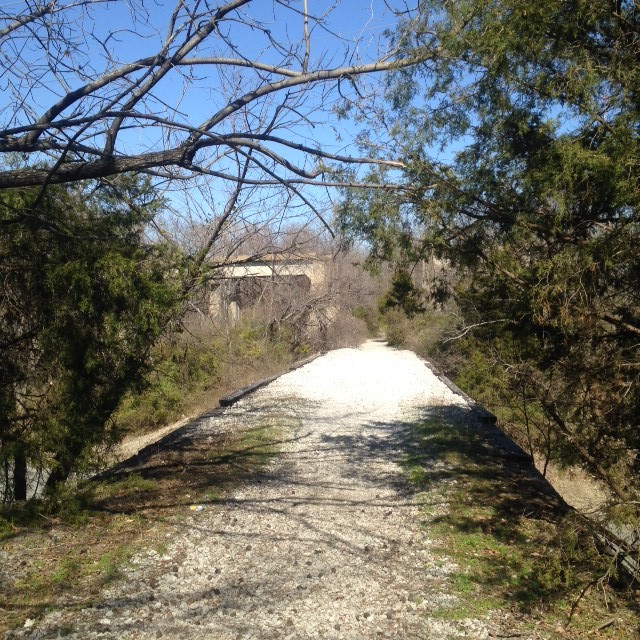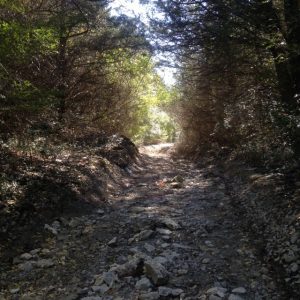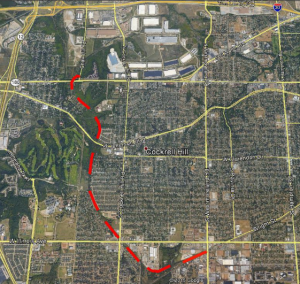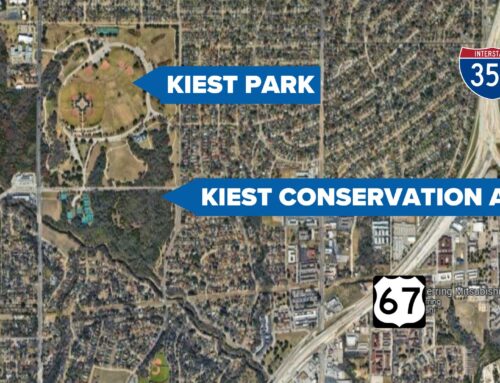
An old Gulf, Colorado & Santa Fe Railroad trestle over Jefferson, just west of Cockrell Hill city. It will be part of the planned Chalk Hill Trail. Photo by Rachel Stone
The first section of the City of Dallas’ trail system to reach West Dallas also will be one of its prettiest.
The planned Chalk Hill Trail follows a 3.7-mile path originally cut by the Gulf, Colorado & Santa Fe Railroad, from the DART station at Wright and Illinois and snakes around to West Davis and Chalk Hill Road. In fewer than four miles, it travels through varied scenery, including residential neighborhoods and forested areas, reaching the chalk cliffs above West Davis.
The trail will be 12 feet wide and paved with 6-inch reinforced concrete. Dallas County is paying $6 million for the trail, and the City of Dallas is paying $100,000 for environmental testing and remediation.
The city is expected to finalize its design for the trail next summer, and construction should being in winter 2017. It should take about a year to complete the trail, so it could be open sometime in 2018.
When it opens, there won’t be lighting or any other amenities along the trail. Fundraising from private “friends of” groups have paid for those extras on the Katy Trail and at White Rock Lake, for example.
Trails like this cost about $2 million a mile, says Jason Ney, planning and acquisitions manager for the city’s park department. The Chalk Hill pathway includes several old railway bridges that have to be replaced, so the $6-million budget is very tight.
The city presented its preliminary plans for the trail to adjacent neighbors in a meeting at the Arcadia Recreation Center Thursday night. A few homeowners said they worry the Chalk Hill Trail will draw criminal activity and take away backyard privacy.
But city staffers say evidence shows that putting a linear park through areas that are “places for people to hide” deters crime. The old railway path is out of the public eye, and it already draws unsavory activity. As a park, it will be patrolled by police, and it will only be open from 6 a.m.-11 p.m.
Besides that, an adjacent trail can increase property value and quality of life, they say.







